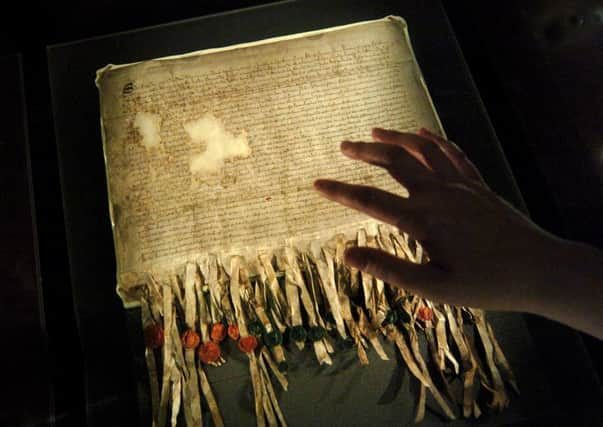On this day 1320: The Declaration of Arbroath


The Declaration of Arbroath is widely regarded to be the most important document in Scotland’s history.
Addressed to Pope John XXII on behalf of Robert the Bruce and the Scottish people, the script declares the nation’s right to self-sovereignty and appeals against both Scotland and Bruce’s excommunication from the Christian Church.
Advertisement
Hide AdAdvertisement
Hide AdGenerally believed to have been drafted at Arbroath Abbey by Abbott Bernard, the historic declaration was one of three letters sent to the papal court at Avignon in France.
It was written in 1320 at a time when Scotland was still mired in a long period of conflict with neighbouring England, which had been ongoing since Edward I’s invasion of 1296.
After the Scotland’s victory at the Battle of Bannockburn in 1314, the English king Edward II steadfastly refused to recognise Scotland as an independent nation. Worse still, Edward had persuaded the pope to excommunicate the whole of Scotland. Robert the Bruce had already been excommunicated for the murder of the Red Comyn at Greyfriars Kirk, Dumfries in 1306. The declaration sought to reverse the decision by the church and convince the pope to recognise Scotland as a free nation in its own right.
While much of the history contained in the document is ludicrous, its emotional and moral sincerity cannot be argued: “It is in truth not for glory, nor riches, nor honours that we are fighting, but for freedom – for that alone, which no honest man gives up but with life itself.”
Despite its eloquence, the declaration does not appear to have swayed the pope to any great degree. However, it did lay the groundwork for the Treaty of Northampton, ratified 8 years later, which saw the English finally relinquish their claim to Scotland.
The 19 seals attached to the foot of the letter are tokens of consent from the barons and earls of Scotland. It is thought that the version sent to the pope contained 39 seals, but this original has long been lost.
For many historians, the declaration can be viewed as an early expression of modern democracy. There is even evidence to suggest that it influenced the American Declaration of Independence of 1776. Contrast and compare:
Advertisement
Hide AdAdvertisement
Hide Ad“As long as but a hundred of us remain alive, never will we on any conditions be brought under English rule. It is in truth not for glory, nor riches, nor honours that we are fighting, but for freedom - for that alone, which no honest man gives up but with life itself.”
Declaration of Arbroath, 6 April 1320
“We hold these truths to be self-evident, that all men are created equal, that they are endowed by their Creator with certain unalienable Rights, that among these are Life, Liberty and the pursuit of Happiness.”
Declaration of Independence, 4 July 1776
The full text of the Declaration of Arbroath can be read here.
As a footnote, it is worth mentioning that the Declaration of Arbroath runs to a spookily-precise word count of 1320.